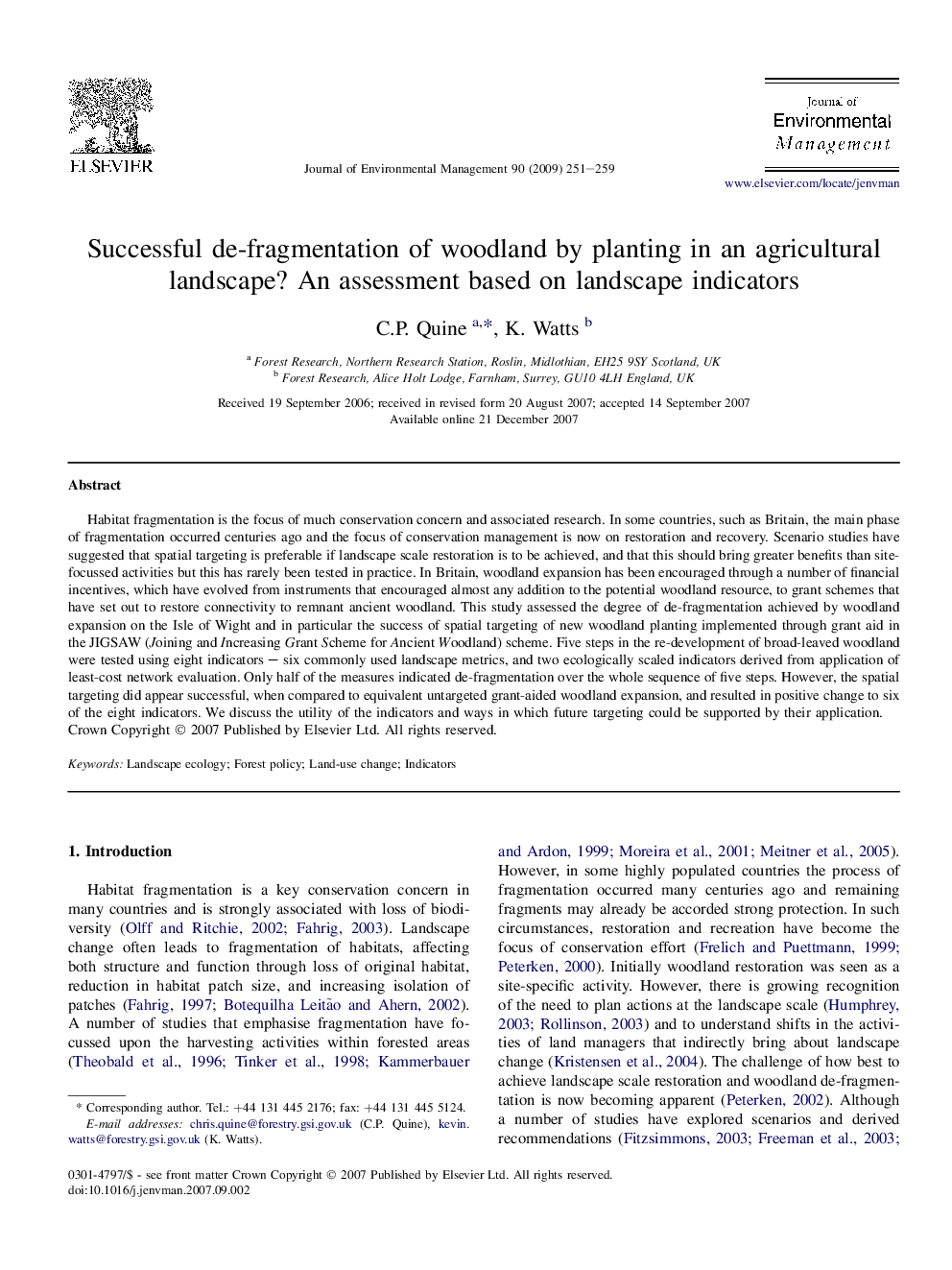| Article ID | Journal | Published Year | Pages | File Type |
|---|---|---|---|---|
| 1058091 | Journal of Environmental Management | 2009 | 9 Pages |
Habitat fragmentation is the focus of much conservation concern and associated research. In some countries, such as Britain, the main phase of fragmentation occurred centuries ago and the focus of conservation management is now on restoration and recovery. Scenario studies have suggested that spatial targeting is preferable if landscape scale restoration is to be achieved, and that this should bring greater benefits than site-focussed activities but this has rarely been tested in practice. In Britain, woodland expansion has been encouraged through a number of financial incentives, which have evolved from instruments that encouraged almost any addition to the potential woodland resource, to grant schemes that have set out to restore connectivity to remnant ancient woodland. This study assessed the degree of de-fragmentation achieved by woodland expansion on the Isle of Wight and in particular the success of spatial targeting of new woodland planting implemented through grant aid in the JIGSAW (Joining and Increasing Grant Scheme for Ancient Woodland) scheme. Five steps in the re-development of broad-leaved woodland were tested using eight indicators – six commonly used landscape metrics, and two ecologically scaled indicators derived from application of least-cost network evaluation. Only half of the measures indicated de-fragmentation over the whole sequence of five steps. However, the spatial targeting did appear successful, when compared to equivalent untargeted grant-aided woodland expansion, and resulted in positive change to six of the eight indicators. We discuss the utility of the indicators and ways in which future targeting could be supported by their application.
